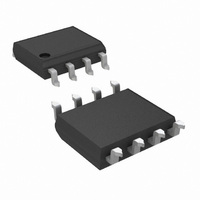LM77CIMX-5/NOPB National Semiconductor, LM77CIMX-5/NOPB Datasheet - Page 13

LM77CIMX-5/NOPB
Manufacturer Part Number
LM77CIMX-5/NOPB
Description
IC TEMP SENSOR DIGITAL 8-SOIC
Manufacturer
National Semiconductor
Datasheet
1.LM77CIMM-3NOPB.pdf
(18 pages)
Specifications of LM77CIMX-5/NOPB
Function
Temp Monitoring System (Sensor)
Topology
ADC, Comparator, Register Bank
Sensor Type
Internal
Sensing Temperature
-55°C ~ 125°C
Output Type
I²C™
Output Alarm
Yes
Output Fan
No
Voltage - Supply
3 V ~ 5.5 V
Operating Temperature
-55°C ~ 125°C
Mounting Type
Surface Mount
Package / Case
8-SOIC (3.9mm Width)
Lead Free Status / RoHS Status
Lead free / RoHS Compliant
Other names
*LM77CIMX-5
*LM77CIMX-5/NOPB
LM77CIMX-5
*LM77CIMX-5/NOPB
LM77CIMX-5
3.0 Application Hints
The temperature response graph in
application designed to meet ACPI requirements. In this type
of application, the temperature scale is given an arbitrary val-
ue of "granularity", or the window within which temperature
notification events should occur. The LM77 can be pro-
grammed to the window size chosen by the designer, and will
issue interrupts to the processor whenever the window limits
have been crossed. The internal flags permit quick determi-
nation of whether the temperature is rising or falling.
The T_CRIT limit would typically use its separate output to
activate hardware shutdown circuitry separate from the pro-
cessor. This is done because it is expected that if temperature
has gotten this high that the processor may not be respond-
ing. The separate circuitry can then shut down the system,
usually by shutting down the power supply.
Note that the INT and T_CRIT_A outputs are separate, but
can be wire-or'd together. Alternatively the T_CRIT_A can be
diode or'd to the INT line in such a way that a T_CRIT_A event
activates the INT line, but an INT event does not activate the
T_CRIT_A line. This may be useful in the event that it is de-
sirable to notify both the processor and separate T_CRIT_A
shutdown circuitry of a critical temperature alarm at the same
time (maybe the processor is still working and can coordinate
a graceful shutdown with the separate shutdown circuit).
Figure 7
depicts a typical
13
To implement ACPI compatible sensing it is necessary to
sense whenever the temperature goes outside the window,
issue an interrupt, service the interrupt, and reprogram the
window according to the desired granularity of the tempera-
ture scale. The reprogrammed window will now have the
current temperature inside it, ready to issue an interrupt
whenever the temperature deviates from the current window.
To understand this graph, assume that at the left hand side
the system is at some nominal temperature. For the 1st event
temperature rises above the upper window limit, T
ing INT to go active. The system responds to the interrupt by
querying the LM77's status bits and determines that T
was exceeded, indicating that temperature is rising. The sys-
tem then reprograms the temperature limits to a value higher
by an amount equal to the desired granularity. Note that in
Event Interrupt Mode, reprogramming the limits has caused
a second, known, interrupt to be issued since temperature
has been returned within the window. In Comparator Interrupt
Mode, the LM77 simply stops issuing interrupts.
The 2nd event is another identical rise in temperature. The
3rd event is typical of a drop in temperature. This is one of the
conditions that demonstrates the power of the LM77, as the
user receives notification that a lower limit is exceeded in such
a way that temperature is dropping.
The Critical Alarm Event activates the separate T_CRIT_A
output. Typically, this would feed circuitry separate from the
processor on the assumption that if the system reached this
temperature, the processor might not be responding.
www.national.com
HIGH
, caus-
HIGH









